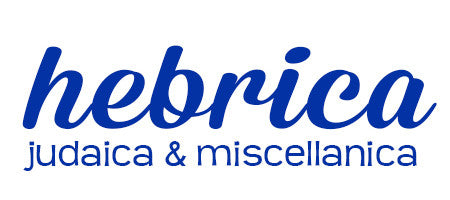 On my first trip to Israel, to study at Pardes, I kept hearing this word mamash. My street Hebrew being pretty limited, I couldn't quite figure out what mamash means. Turns out that, like most Hebrew words, mamash can mean a lot of things. In the Talmud, it means "literally," as in the Gemara to Bava Kamma 83b, which asks why not take literally (mamash) the Torah's eye-for-an-eye rule? In modern Hebrew, mamash can also mean literally, actually, or very, depending on the context.
On my first trip to Israel, to study at Pardes, I kept hearing this word mamash. My street Hebrew being pretty limited, I couldn't quite figure out what mamash means. Turns out that, like most Hebrew words, mamash can mean a lot of things. In the Talmud, it means "literally," as in the Gemara to Bava Kamma 83b, which asks why not take literally (mamash) the Torah's eye-for-an-eye rule? In modern Hebrew, mamash can also mean literally, actually, or very, depending on the context.
Mamash also has the sense of reality in a tangible way. For me, as a Jewish artist, that's the beauty of Jewish art: it's real, it's tangible, it's a way of approaching sacred texts and Jewish ideas mamash. When someone asks me to do a bit of Jewish papercut art for a bar mitzvah or bat mitzvah gift, it draws me into the text first, more often, and more deeply than I might otherwise have done. I study the text and, being a visual person, images float to the top. In some cases, that happens very quickly, because the Torah portion is already full of actual things, making it easy to illustrate the portion mamash.
 For example, in parsha Ha'azinu, Moses says to the Israelites, "May my discourse come down as the rain," in lovely poetic passage.* I pictured the rain as abstract bits of copper, with the beginning words of the parsha in Torah-style script on a dark background, a twist on the kabbalistic idea of the Torah as black fire on white fire.
For example, in parsha Ha'azinu, Moses says to the Israelites, "May my discourse come down as the rain," in lovely poetic passage.* I pictured the rain as abstract bits of copper, with the beginning words of the parsha in Torah-style script on a dark background, a twist on the kabbalistic idea of the Torah as black fire on white fire.
In my Five Things series, I attempted to choose one thing - very difficult to do - that stands out to me from each book of Torah. In some cases, the thing was easy to visualize, as in the Mah Tovu passage from parsha Balak, "how beautiful are your tents, O Jacob." On the other hand, how do you illustrate tohu v'vohu, without form and void, from the creation narrative in parsha Bereishit? I had to rely on my imagination, seeing in my mind's eye that moment when the waters and the heavens began to separate, in a pulse of energy.
Each papercut based on a sacred text becomes a meditation on that text, both in the planning and in the actual production. There are some who say that Torah needs no illustration; our sefer Torah, the actual scroll, is the most beautiful and the sparest transmission imaginable, created by the hand of the scribe. A Jewish artist can help others to connect with Torah in more ways, to draw closer. That is my aim and that is why I do my art, mamash.
There's a very Jewish notion that the world is not yet complete, we are helping God to complete it. Like the scribe, the artist is using his or her hands to help with that sacred task.
*JPS Tanach
Resources
More on how to translate mamash
Black fire, white fire in the Zohar
The Practical Talmud Dictionary
Contact Hebrica | Click to tweet.
To subscribe to the Hebrica "Snippets" blog, enter your email address at the bottom of the page.
Copyright Notice: The contents of this site are copyrighted by Hebrica Judaic Art, all rights reserved. Republication by permission only, with a link back and the source of the republication clearly noted. Excerpts, commentary, and fair use applications should be accompanied by a link back to the original content on this site.

